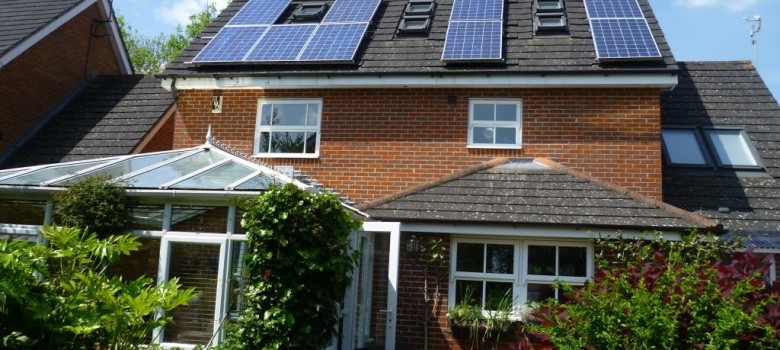
Solar PV has never been as attractive as it is now. Prices are at an all time low, the feed-in tariff is making the payback excellent and the cost of mains electricity is still going up. Whilst solar generation technology has improved, the storage methods for the power you generate has lagged far behind.
An average home might use around 10kW/day, whilst a typical 3.5kW panel system would produce something like 10kW on a summers day and only 2.5kW on a winter day. So on the face of it, the panels would produce the majority of your energy needs, but there is a snag – for the majority of us domestic electricity consumers, we use much more electricity in the evening than during the day, and there tends to be less sun, or indeed no sun, at these all important hours.
You can imagine a scenario for example, where only 5kW out of 10kW generated is used during daylight hours, but then 5kW is used after dark, powering the oven and the TV and the washing machine. You have two choices – to displace the generated energy to later in the day (i.e. alter the supply), or to move the demand forward to when the energy is generated (i.e. managing the demand).
Batteries
This is one way to use your generated electricity when it gets dark. There are various types of battery storage system on the market, but they all come up against several major hurdles. Firstly, any battery system would have to charge and discharge thousands of times in its life. This is beyond the capability of many batteries, and this means regular replacement. Cost of the battery is also prohibitive for many, with the cost per unit of storing the energy, all said and done, being more than the cost of just using grid electricity.
Working with the grid
Instead of storing the energy you create, you can look to export it to the grid. Now for most people, who don’t have an export meter, it is assumed that you export 50% of your generated energy back to the grid anyway, but for those who actually use even less than this, it might be worth installing an export meter and getting more from the exported electricity. If you tend to be away from home a lot in the summer for example, this could be worth considering. Unfortunately the export tariff is rather low, so you aren’t likely to see big returns via this route. If you can, you should try to utilise the energy rather than exporting it, as the cost per unit is around three times the export tariff.
Soft storage
What is becoming much more popular now is what is called ‘soft storage’. This means that instead of storing the excess energy you generate in the form of electricity, you can store it in other mediums.
[product_box id=”10060″][/product_box]
Using a diverter like the Apollo Gem or the Optimmersion, you can store the energy you are generating in your immersion tank or your storage heaters for use later in the day. They are far cheaper than batteries and if used effectively can save you just as much energy as batteries can. This should be one of your first options before considering a more expensive battery system.
Manage Supply or Demand
By far the cheapest option is going to be managing your demand for electricity. By trying to use your appliances during the middle of the day, you will save considerably over the course of a year. Storing energy is always going to more expensive and I would advise against it in most cases.
Think we missed something? Do you have a different opinion?
Comment below to get your voice heard…




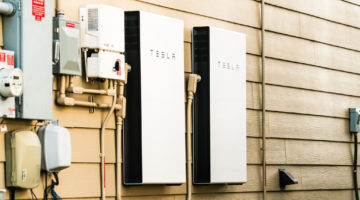
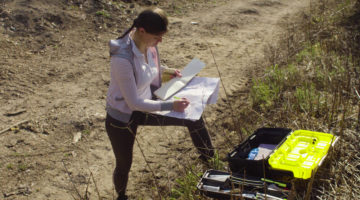
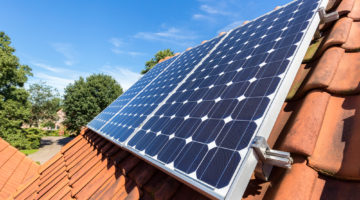
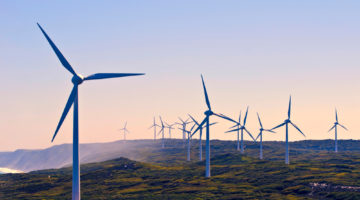





I was keen to get some batteries integrated into my solar PV install so I could maximise what I used. I got a couple of quotes and couldn’t believe it – the battery kit was the same price as the solar to install in the first place. I think the hot water immersion things are the way to go to store the excess solar energy.
I suspect market forces will drive the evolution of electricity storage in the near term.
Until that happens I use ordinary timers.
Cheap and easy to set up, they can be set to take maximum advantage of solar panel output for devices like washing machines and tumble dryers, phasing their switch-on times so they draw current sequentially. If you want to get REALLY techie, you can incorporate a light-sensing switch into the system that only energises the circuit when there’s enough light to generate enough compensating power from your solar array.
I load my machines, switch them on and walk away in the knowledge that they will start up only when it’s most cost effective to do so.
Cost? Less than £30.
There is a solution in place, in Germany, now. Hydrogen is produced using the excess power which is then injected into the gas grid for later use. Thuga Group in Frankfurt have just hailed their year long trial a resounding success and guess what – it is a British company that manufactures the equipment, (ITM Power). Our National grid is actively looking for three hundred sites to position these injectors on our national grid. Yes it is large scale but it is happening now. In the future when we have fuel cell heat and power units instead of gas boilers our solar roofs will produce hydrogen which we will store and use as and when we want to use it.
Hi
I thought we cannot store the Hydrogen in any safe way and this was holding back this system.
Has there been a major change re this?
Best regards
Bob
Related to Bob Craske’s comments about a light-sensing switch I’ve searched the internet and never found anything like it. Has anyone any idea where I could get one?